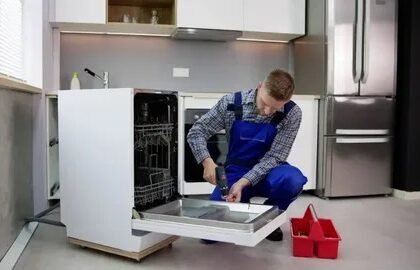A basket strainer is a vital filtration component used in various industrial systems to remove debris and contaminants from fluids. By preventing particles from entering sensitive equipment like pumps, valves, and pipelines, basket strainers help ensure that systems operate smoothly and efficiently. These strainers are commonly used in industries such as water treatment, chemical processing, and food and beverage production. In this article, we’ll dive into how basket strainers work, their applications, and why they are essential for maintaining optimal system performance.
1. What is a Basket Strainer?
A basket strainer is a type of filtration device designed to remove large particles and debris from liquids. It consists of a metal or plastic housing with a perforated basket inside, where the fluid flows through the basket, and particles are caught on the mesh. The strainer is designed to handle a variety of fluids, including water, oils, and chemicals, making it a versatile solution for filtration.
-
Structure: The strainer features a basket with mesh or perforated material that captures larger particles from the fluid.
-
Design: Most basket strainers are easy to clean and maintain, with a removable basket that allows for quick and easy removal of captured debris.
The basket strainer serves as the first line of defense in preventing debris from clogging or damaging downstream equipment.
2. How Does a Basket Strainer Work?
The operation of a basket strainer is simple and effective. The liquid enters the strainer through the inlet, and as it passes through the perforated basket, debris and solid particles are captured. Clean fluid flows out through the outlet, while the collected debris is retained in the mesh basket.
-
Fluid flow: The fluid enters the strainer housing and passes through the basket.
-
Filtration: Solid particles and contaminants are trapped in the mesh or perforated basket.
-
Clean fluid: The filtered fluid exits the strainer, free of larger particles that could cause blockages or damage equipment.
The effectiveness of the basket strainer depends on the mesh size and the design of the basket, which determines the size of the particles that can be filtered out.
3. Types of Basket Strainers
Basket strainers come in several different types, designed to suit specific applications and requirements. Here are the most common types:
a. Simple Basket Strainers
Simple basket strainers are the most basic type of strainer, designed for general-purpose filtration in various systems. They are usually made from stainless steel and feature a simple design that is easy to install and maintain.
-
Basic filtration: Ideal for applications where general filtration is required, such as water treatment or coolant systems.
-
Durable: Made from materials that resist corrosion and wear, such as stainless steel.
Simple basket strainers are a cost-effective solution for everyday filtration needs.
b. Y-Strainers with Basket Filters
Y-strainers are another type of strainer that incorporates a basket filter within a “Y” shaped housing. This design makes them more compact and easier to install in tight spaces.
-
Compact design: The “Y” shape is ideal for applications with space constraints, such as pipelines or systems with limited installation room.
-
Versatility: Y-strainers are used in a variety of industries, including water filtration, HVAC systems, and chemical processing.
Y-strainers are a more versatile option for filtration systems that need to handle a variety of flow types and pipe sizes.
c. Automatic Basket Strainers
Automatic basket strainers are designed to clean themselves automatically, making them a more convenient option for systems that require continuous operation without manual intervention.
-
Self-cleaning: These strainers use automated mechanisms such as backwashing or rotating baskets to remove collected debris.
-
Reduced maintenance: Automatic systems help minimize downtime and labor costs by eliminating the need for manual cleaning.
Automatic basket strainers are ideal for systems that operate 24/7 or where frequent maintenance is not feasible.
4. Applications of Basket Strainers
Basket strainers are used in a wide range of industries to filter debris from liquids and ensure smooth system operation. Here are some common applications:
a. Water Treatment Systems
In water treatment plants, basket strainers are used to filter out large debris and particles from raw water before it undergoes more complex treatment processes.
-
Protects equipment: Prevents debris from damaging pumps, valves, and filtration equipment.
-
Maintains water quality: Ensures the water is free from larger particles that could interfere with the treatment process.
Basket strainers are crucial for maintaining water quality and optimizing the efficiency of the treatment process.
b. Oil and Gas Industry
In the oil and gas industry, basket strainers help filter out contaminants from liquids before they are pumped into processing units or storage tanks.
-
Prevents clogging: Protects pipelines and processing equipment from blockages caused by debris and particulate matter.
-
Enhances system efficiency: Helps maintain the flow of oil and gas by ensuring that particles are removed before they cause issues in the system.
Basket strainers are commonly used in offshore platforms, refineries, and other oil and gas operations to ensure smooth and efficient operations.
c. Chemical Processing
In chemical processing, basket strainers help filter out solid contaminants from liquids before they enter reactors, mixers, or other critical equipment.
-
Ensures process integrity: Prevents contaminants from interfering with chemical reactions, ensuring that the process runs smoothly.
-
Protects sensitive equipment: Helps preserve the life of pumps, valves, and reactors by preventing debris from entering the system.
Basket strainers play an essential role in maintaining the integrity and efficiency of chemical processes.
d. Food and Beverage Industry
In food and beverage production, basket strainers are used to remove solid particles from liquids such as juices, syrups, and oils.
-
Ensures product purity: Helps maintain the purity and quality of food products by filtering out contaminants.
-
Compliance with standards: Basket strainers are essential in ensuring compliance with health and safety regulations in food production.
Basket strainers are widely used to improve product quality and ensure that production processes meet industry standards.
5. Benefits of Using a Basket Strainer
Using a basket strainer in your system offers several advantages:
-
Effective filtration: Captures large debris and particles, ensuring that only clean fluid flows through the system.
-
Protects equipment: Prevents damage to pumps, valves, and other critical components by filtering out contaminants before they can cause harm.
-
Low maintenance: Basket strainers are easy to clean and maintain, reducing system downtime and labor costs.
-
Cost-effective: Basket strainers are an affordable solution for preventing expensive equipment repairs and replacements.
6. Conclusion: Ensure Smooth Operations with Basket Strainers
Basket strainers are essential components in many industrial systems, offering reliable filtration to protect equipment and ensure smooth operations. Whether used in water treatment, oil and gas, chemical processing, or food production, basket strainers help remove harmful debris, ensuring that liquids flow cleanly through pipes and equipment. With their simple design, ease of maintenance, and cost-effective functionality, basket strainers are a must-have for maintaining the integrity and efficiency of your system.






